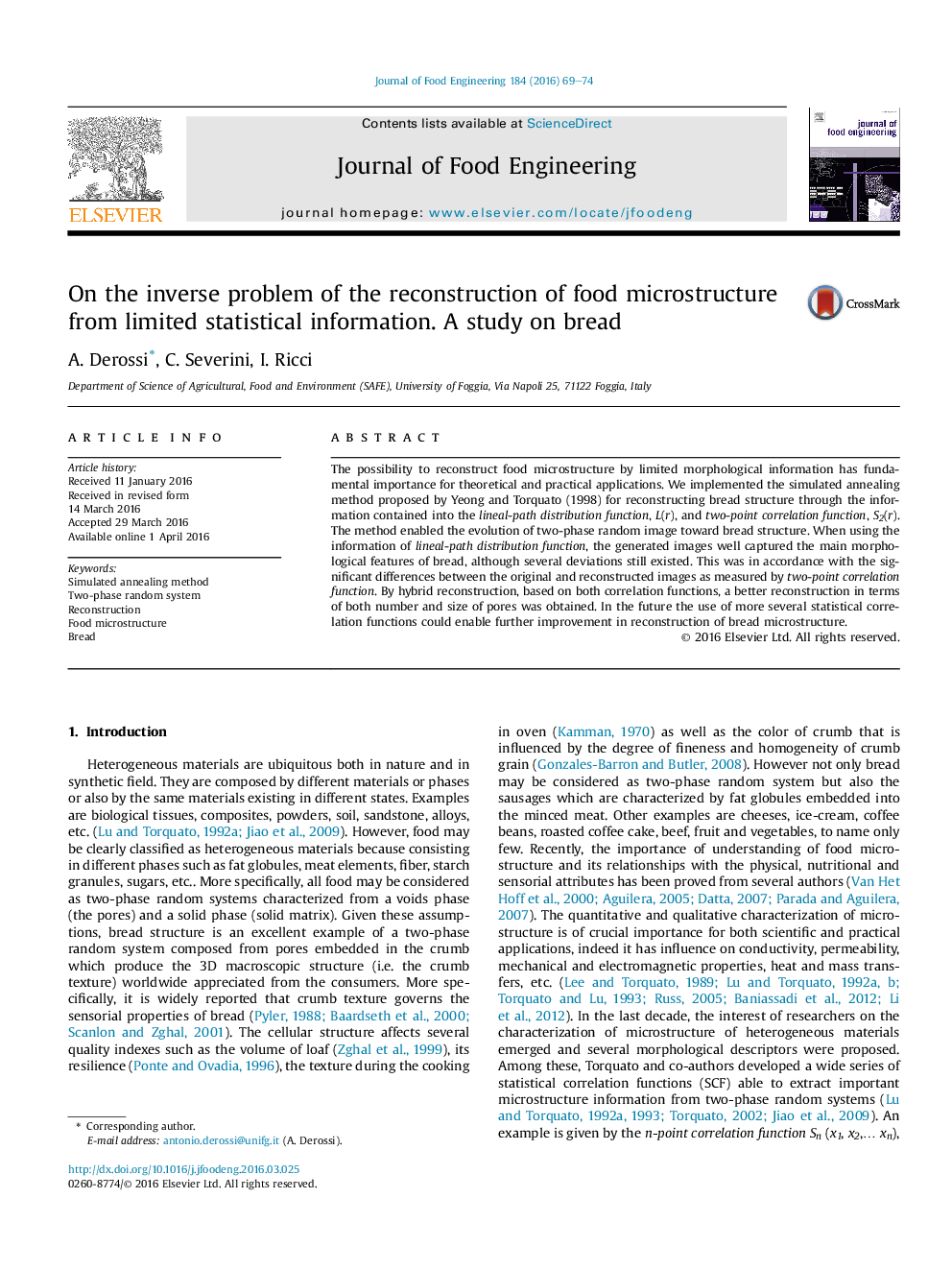| Article ID | Journal | Published Year | Pages | File Type |
|---|---|---|---|---|
| 222618 | Journal of Food Engineering | 2016 | 6 Pages |
•The reconstruction method proposed by Yeong and Torquato was implemented in food science.•Directional lineal-path distribution function and two-point correlation function were used to reconstruct bread structure.•The method well worked enabling at a random image to evolve toward bread structure.•Hybrid reconstruction from L(r) and S2(r) enabled to obtain a better generate image of bread.
The possibility to reconstruct food microstructure by limited morphological information has fundamental importance for theoretical and practical applications. We implemented the simulated annealing method proposed by Yeong and Torquato (1998) for reconstructing bread structure through the information contained into the lineal-path distribution function, L(r), and two-point correlation function, S2(r). The method enabled the evolution of two-phase random image toward bread structure. When using the information of lineal-path distribution function, the generated images well captured the main morphological features of bread, although several deviations still existed. This was in accordance with the significant differences between the original and reconstructed images as measured by two-point correlation function. By hybrid reconstruction, based on both correlation functions, a better reconstruction in terms of both number and size of pores was obtained. In the future the use of more several statistical correlation functions could enable further improvement in reconstruction of bread microstructure.
